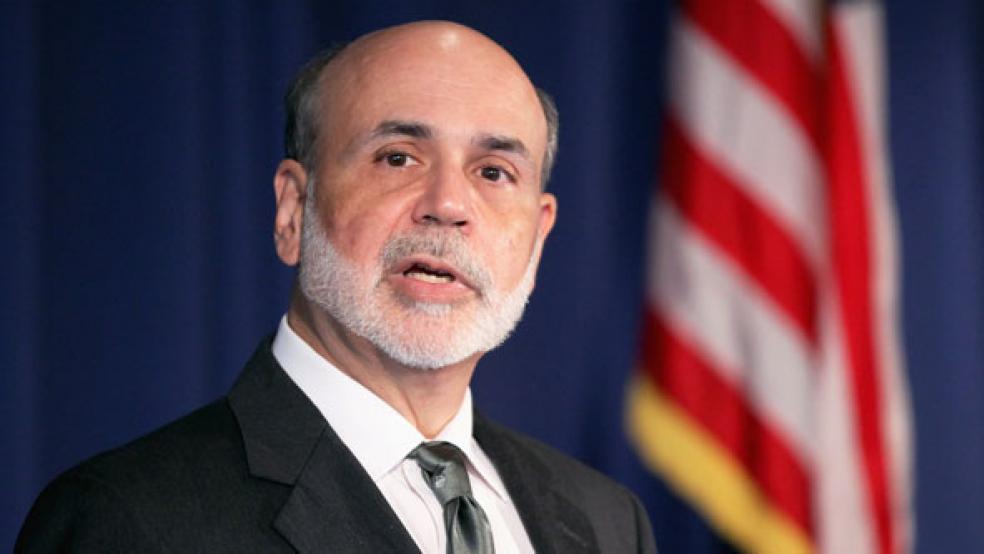As Fed Chairman Ben Bernanke began a two-day policymaking session yesterday, he and his colleagues were split over what, if anything, they should do to bring down a jobless rate of over 9 percent while keeping inflation low. And while there is talk of more transparency by the central bank, there is unlikely to be any significant action taken when the Federal Open Market Committee concludes its meeting today.That will leave some officials, including the outspoken president of the Chicago Federal Reserve Bank, Charles L. Evans pressing for more aggressive efforts in the future.
Bernanke stands in the middle and commands the support of a majority of the FOMC. However, he has made it clear in public comments that he, too, is frustrated that unemployment remains so stubbornly high despite all the Fed has done. Not only did it drop its target for overnight interest rates virtually to zero almost two year ago but it also has taken a series of extraordinary actions, including the purchase of more than $2 trillion worth of longer-term Treasury and mortgage-backed securities that have helped lower long-term rates. In addition, the Fed has made a commitment not to begin tightening policy before the middle of 2013 unless the economy improves more than expected next year.
While almost all Fed watchers expect no policy changes to be announced at the end of the meeting, Evans laid out in a recent speech the course he thinks the central bank should follow. “…To enhance economic growth and employment while maintaining disciplined inflation performance,” Evans said, the FOMC could make a “conditional” statement saying it would keep its target for overnight rates near zero “until the unemployment rate fall substantially, say from its current level of 9.1 percent to 7.5 percent or even 7 percent, as long as medium-term inflation stayed below 3 percent.”
Why would such a conditional statement make a difference? Because most investors making longer-term commitments probably have in mind a date at which they expect the Fed to begin tightening policy by raising rates or selling some of the securities it holds. A better understanding of what changes in economic conditions could trigger a tightening could reduce uncertainty and encourage more investment and more hiring.
While the FOMC isn’t close to adopting details of Evans’ proposal, it did discuss such an approach at the September meeting. Several other officials, including Fed Vice Chairman Janet L. Yellen and Boston Fed President Eric S. Rosengren have endorsed the concept.
As Yellen explained in a speech last week, “When financial market participants understand how a central bank is likely to react to incoming information, asset prices should adjust in ways that anticipate the central bank's expected policy actions, enhancing the monetary policy transmission mechanism and thereby supporting the central bank's attainment of its objectives.”
Equally important, she said, good communication can help anchor the public's long-term inflation expectations,” and that in turn can give policy makers more freedom to take action to fight either unemployment or excessive inflation, whichever is a problem.
The new approach would be built around the forecasts each of the FOMC participants make four times a year. (A summary of the latest set of forecasts will be released this afternoon during a Bernanke press conference, updating those from June.) They include projections for four variables: GDP, the unemployment rate, and the consumer price index -- both including and excluding food and energy. The projections are for the current year, the next two years, and “longer term.”
Joseph Gagnon, a former senior Fed economist now at the Peterson Institute for International Economics, said in an interview that he expects the Fed to move in the next two or three months to enhance its communication, most likely by linking the forecasts made by FOMC participants to the goals for employment and prices.
“They want to do something that would convert their forecasts into a guide for how monetary policy will develop,” Gagnon said. “It would make it clear how one should think about policy going forward. ‘We promise to try to achieve this. When we fall below the path, we will try to do more. When we are above, we will do less.’”
However, none of this is assured given the divisions within the committee. Three of the 12 Reserve Bank presidents on the committee, Charles I. Plosser of Philadelphia, Richard W. Fisher of Dallas, and Narayana Kocherlakota of Minneapolis, dissented at the last two meetings. In August they opposed saying that policy was not likely to be tightened before mid-2013, and in October they did not approve “Operation Twist,” which involved selling shorter-term securities and buying longer-term ones to try to lower longer-term rates.
Given that dissension and the strident opposition among some conservative politicians -- including all the Republican presidential candidates -- to recent Fed moves, the timing of any change is hard to predict. But with the desire of Bernanke and a majority of the committee to try to boost growth and bring down the high jobless rate, some move probably will be forthcoming to try to improve communication with the hope of making monetary policy more effective.


